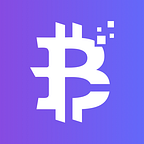Bitbyte Academy — Why is Web3 important?
Web3 has become an all-encompassing term for a new and better vision of the Internet. at its core, Web3 is about returning power to users in the form of ownership through blockchains, cryptocurrencies, and non-homogenized tokens. As a comparison, Web1 was read-only, Web2 was read- and write-capable, and the future Web3 will be read-, write-, and owned.
While the remarkable features of Web3 are not isolated and cannot be simply categorized, for the sake of simplicity, it is useful to try to separate them for ease of understanding.
Ownership
Web3 gives users ownership of digital assets in a way that has never been done before. For example, if a user is playing a Web2 game, if they purchase in-game items, they are tied directly to their account, and if the game creator wants to delete their account, they lose those in-game items.
In Web3, on the other hand, users are allowed to take direct ownership of digital assets in the form of non-homogenized tokens (NFTs). No one, not even the game creator, has the power to take away the user’s ownership. And, if users no longer play the Web3 game, they can sell or trade in-game items on the open market and recover their rightful value.
Anti-censorship
Currently, there is a serious power imbalance between Web2 content platforms and their creators. For example, OnlyFans, an adult site with user-produced content, has more than 1 million content creators, many of whom use the platform as their primary source of income. In August 2021, OnlyFans announced a ban on pornography, an announcement that sparked outrage among the platform’s creators, meaning that content creators were deprived of revenue after helping to create the platform’s massive data traffic.
While the decision was quickly reversed after strong opposition and creators won the battle, it highlights the biggest dilemma facing creators in the Web2 era: if they leave a platform, they lose the reputation and all the creative value they have built up on it.
The Web2 era required content creators to trust that the platform would not change its rules, which is often untenable, but instead is one of the most native features of the Web3 platform.
Decentralized Autonomous Organizations (DAO)
In Web3, in addition to owning their own data, users can vote on the platform’s collective decisions as part of a collective by using tokens similar to company stock. A decentralized autonomous organization coordinates decentralized ownership of the platform and makes collective decisions about the future of the platform.
A Decentralized Autonomous Organization is technically a smart contract defined as a pre-agreed contract that automatically determines decentralized decisions about the pool of resources (tokens), and users who own the tokens are able to vote on how the resources are used, and the deployed code will automatically execute the results of the vote.
Although there are many Web3 communities that are defined as decentralized autonomous organizations, and all have achieved different degrees of decentralization and automation through code, exploring the optimal form of decentralized autonomous organizations and future development paths is still under exploration at this time.
Identity
In Web2 platforms, users often need to create a separate account, such as a Twitter account, a YouTube account, a Reddit account, and so on. To change the display name or profile picture, users must perform such actions in each account. And in some cases, logging in with a social media account often poses censorship issues, and these platforms can ban, lock or even delete accounts at any time.
With Web3, it is possible to create a blockchain account to access any application and remain anonymous, without having to provide any personally identifiable information to create an account identity.
Decentralized Infrastructure
The Web3 ecosystem is growing rapidly, so it is inevitable that the ecosystem will still rely on centralized infrastructure, such as GitHub, Twitter, Discord, etc. While there are already many Web3 companies scrambling to fill these gaps, it will undoubtedly take a long time to build a high-quality, reliable infrastructure. For now, it looks like decentralized infrastructure and usage tools will gradually emerge to the masses and the marketplace and become mainstream.
Education
Web3 introduces new paradigms that require learning paths and mental models that are different from those of the Web2 era. In contrast, similar educational activities occurred during the rise of Web1 in the late 1990s, when proponents of the World Wide Web used a range of educational technologies to educate the public, from simple phrases (information superhighways, browsers, web surfing) to video narration and more. Web3, however, is not difficult to understand but is very different, which means that it is also critical for Web2 users to understand more of the educational outreach of the Web3 paradigm.
Why is Web3 important?
Web3 is the future of decentralization, and applications of the Web3 era are already emerging in a young and growing ecosystem, such as decentralized wallets, Defi, NFT, Gamefi, and more.
Since Gavin Wood coined the term Web3 in 2014, although many of these ideas have not become a reality until recently, yet in the last year alone, interest in cryptocurrencies has skyrocketed, and with improvements in Layer 2 scaling solutions, large-scale experiments with new forms of governance, and a revolution in digital identity, creating a better Internet with Web3 makes the future of the Internet look even brighter.
About Bitbyte
Bitbyte.finance provides SAAS services for developers in the Web3 space, including Defi&NFT applications, Swap and mining pools, and community traffic services. reliable, and personalized decentralized platform.
